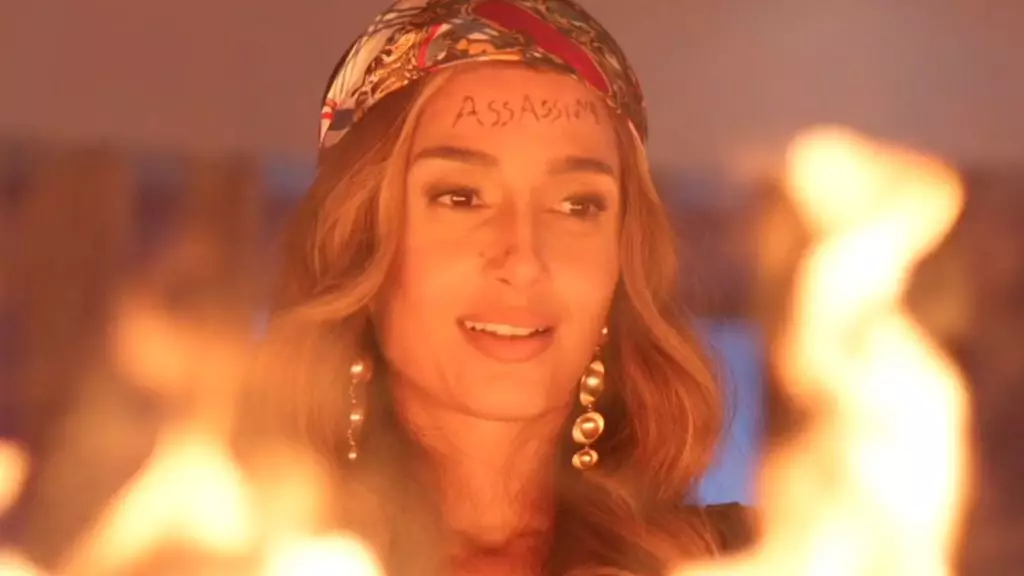In an era where narrative satisfaction often hails from happy endings, “Beleza Fatal” (Scars of Beauty) diverges boldly from tradition. Airing its gripping finale after 40 electrifying episodes, the show leaves its viewers ensnared in a web of unresolved emotions and chilling fates. Unlike the typical escapades one might expect from romantic dramas, this telenovela dares to confront darker realities, illustrating the emotional costs of revenge, betrayal, and familial ties. The choices made by characters resonate with viewers long after the credits roll, forcing us to grapple with our own interpretations of happiness and fulfillment.
The central narrative revolves around the mysterious murder of Benjamin Argentino, setting off a cascade of events that entraps its protagonists. Intrigue spills from every scene, but at its heart are the relationships that define the characters. The question of Benjamin’s killer looms large, enticing viewers with whispers of suspicion that ultimately engulf Lola, portrayed by Camila Pitanga. Her character is a multifaceted creation, torn between grief and desperation, embodying the trade-off between love and vengeance. This exploration into human complexity sets the stage for an ending that challenges one-dimensional storytelling conventions.
The Fallout of Betrayal
As the tale unfolds, it is not merely Benjamin’s death that causes turmoil but the ripple effect it has on the relationships surrounding him. Lola, initially framed as a loving wife, spirals into turmoil as her loyalties are questioned and her motives scrutinized. Gisela (Julia Stockler) and Carol (Manu Morelli), his heirs, reconstruct their lives by inheriting the Argento hospital, symbolizing a new legacy built on the ruins of past betrayals. Their renaming of the hospital underscores the interweaving of familial loyalty and the fresh beginnings that frequently arise from tragic circumstances.
Sofía (Camila Queiroz)’s arc is particularly telling; as she distances herself from her adoptive parents in a quest for vengeance, her choices lead to isolation rather than empowerment. This character’s descent into darkness manifests a crucial understanding of revenge’s hollowness. The abandoned connections, encapsulated through her rejection of those who raised her, poignantly illustrate that revenge may provide an illusion of justice but ultimately comes at the cost of genuine relationships.
The Climactic Showdown
The climax, where Lola attempts to extinguish Sofía’s life within the walls of LolaLand, represents the culmination of tragic entanglements and festering grudges. This scene serves as a metaphoric burning away of innocence, as Sofía, in turn, acts as a savior rather than the victim. The corresponding rescue from the flames by Gabriel (Enzo Romani) highlights the resurgence of loyalty amidst chaos, showcasing the capacity for redemption even when engulfed by darkness.
In a moment of powerful revelation, Sofía shifts the burden of guilt onto Lola, confessing to the murder that has shackled her to a life defined by trauma and deception. This confession is not mere vindication; it is a poignant acknowledgment of the legacy of pain exacerbated by revenge. As Lola’s façade crumbles, her confrontations with Sofía reflect the intricate dance of dominance and submission inherent in their relationship, revealing that power can oscillate between predator and prey.
The Echoes of Confrontation
In a heartbreaking exchange laden with psychological depth, Lola’s final words to Sofía resonate as haunting echoes that explore themes of identity and existence. “You don’t exist without me,” Lola proclaims, crafting a chilling perspective that challenges the very essence of individuality. This assertion plunges the audience into a contemplation of self-worth and dependency, portraying how revenge entraps individuals in cycles of violence and emotional bondage.
As Sofía walks away from the prison, her encounter with a little girl triggers reflection and doubt, mirroring her fractured self. Lola’s taunts linger in her mind, prompting introspection about the true nature of satisfaction in her quest for retribution. The show ends appropriately ambiguous, urging viewers to ponder whether happiness is achievable in a world where moral lines blend seamlessly with shades of gray.
“Beleza Fatal” masterfully crafts a narrative that defies the clichés of the genre, expertly intertwining character dilemmas with broader societal themes. Through its least forgiving moments, the telenovela unflinchingly exposes the intricacies of love, hate, and the perennial struggle for identity. It stands as a testament to the power of storytelling in forcing us to confront our deepest fears—reinventing what it means to seek closure in an unpredictable world.

